Are you looking for an answer to “How to Fold a Blazer?“
When it comes to men’s clothing, you will struggle to find something that stands out more than a smart blazer. With that being said, it is very important that we know how to take care of our clothing so that we look as good as possible when wearing it.
Ironing and folding a blazer can be seen as quite an aggravating task. If you do not do it properly, you could be left with a permanently creased blazer, which won’t correspond well when trying to pull off a formal look.
In this guide, we will be discussing three popular blazer folding techniques that are used by men around the world. Each technique is exceptionally easy and will leave you with smooth, crease-free blazers and clothing.
How to Fold a Blazer or Suit Jacket: 3 Ways
The Tucked-Shoulder Fold
The tucked-shoulder fold is the most commonly used folding technique in the world. As a general rule, the less folding required, the less creased your blazer will be. While the tucked-shoulder does include a large fold down the middle of the blazer, it is still more effective than most other techniques.
To get started, you will need to gently work one shoulder of the blazer inside out. Once you have done this, tuck the other shoulder into it – in the end, the seam of the one-shoulder should lie against the seam of the other. The sleeves of the blazer should be on top of each other and point downwards. More so, the breast panels should be inverted and sandwich the entire thing. Lastly, you will need to fold the article of clothing in half.
This folding technique is suitable for storing the blazer in a suitcase, bag, box, etc. With that in mind, ensure that you do not rest too much weight on the blazer, as this could cause the central crease to worsen or become permanent.
The Shirt-Style Fold
The shirt-style fold is arguably the easiest way in which you can fold your blazer. In fact, this technique is very similar to how you would go about folding a dress shirt (hence the name).
First thing you need to do is fasten the blazer’s buttons. Once you have your blazer laid out in front of you with the back facing up, you will start by folding the sleeves gently behind the back. When this step is completed, the two shoulders should overlap slightly. You will then fold the blazer in half from the bottom, ensuring that the bottom hem is tucked underneath the collar. In the end, the lapel and collar of the blazer should sit on top of the bundle, leaving you with a well-folded and neat-looking square.
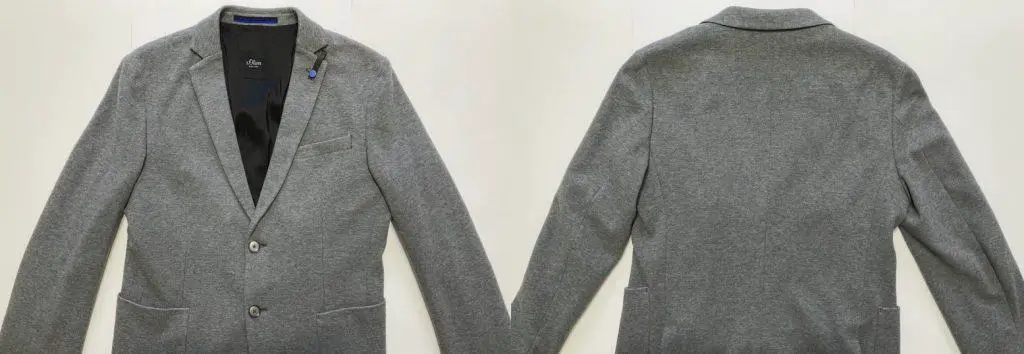
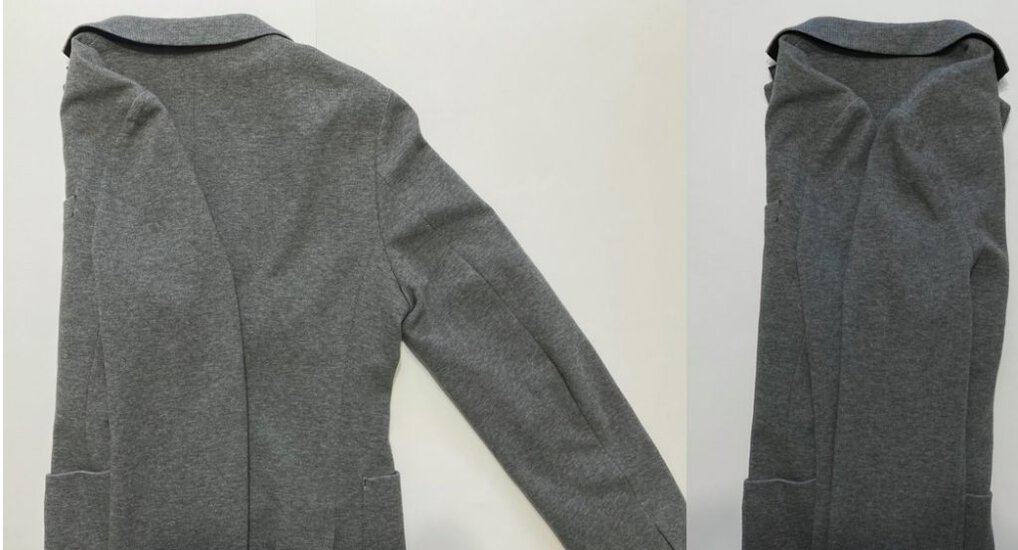
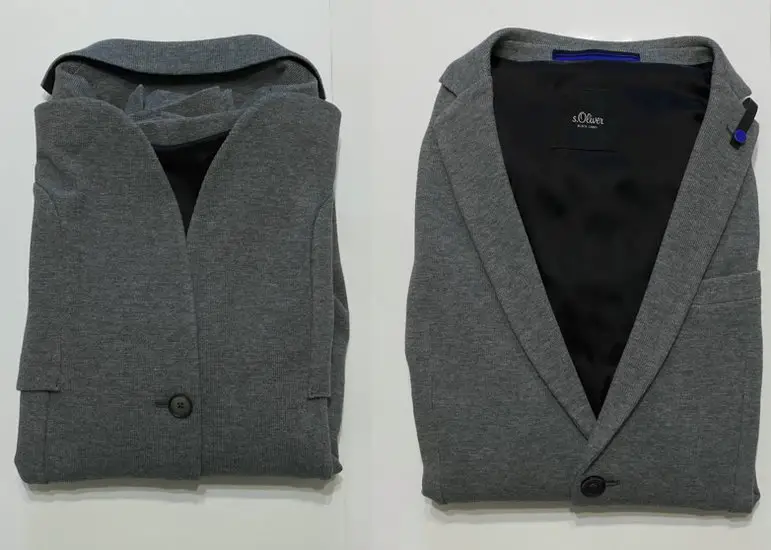
This folding technique will make packing exceptionally easy. The biggest and only problem with the shirt-style fold is the fact you have to fold the blazer in multiple places. As we have already mentioned, this will increase the chances of permanent creasing.
However, if you know that you will need the blazer in a short amount of time, this technique will work just fine. This is due to the fact that creases only form after the blazer has been folded in the same position for an extended period.
In other words, the shirt-style fold is not suitable if you are going to be storing your blazer for weeks or months on end. On the other hand, if you simply need to fold the blazer in order to transport it from one location to another, this folding technique is perfect.
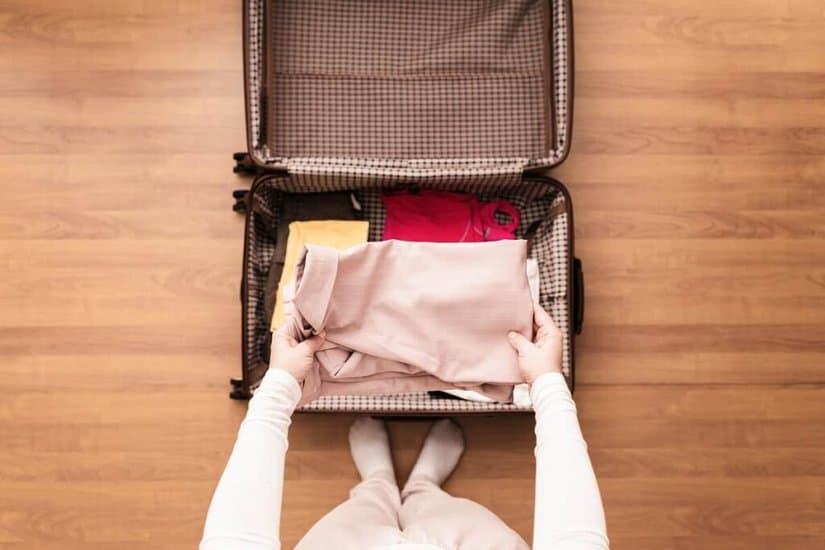
The Jacket Roll
The best folding technique out there is the one that requires no folds at all. If you do not fold your blazer, you will not have to worry about creases or permanent folding lines. This is where the jacket roll comes into the picture.
This technique is slightly more complicated than the other two mentioned on the list. Most of the action occurs around the blazer’s shoulders; however, these are much more flexible than the breast panels.
Once you have the blazer laid out in front of you, you will start by flipping one shoulder over the other so that the jacket is inverted. Ensure that both sleeves still face downwards and that there is as little creasing as possible.
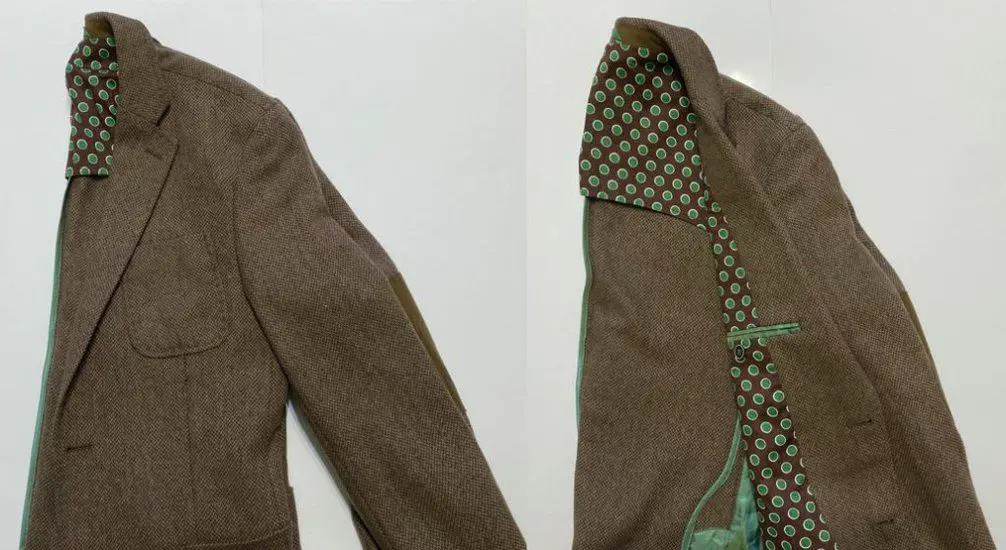
Another great advantage of this folding technique is the fact that it can be used to store other articles of clothing. If you have a dress shirt, tie, or underwear that you would also like to keep crease-free, simply place it near the collar of the inverted blazer.
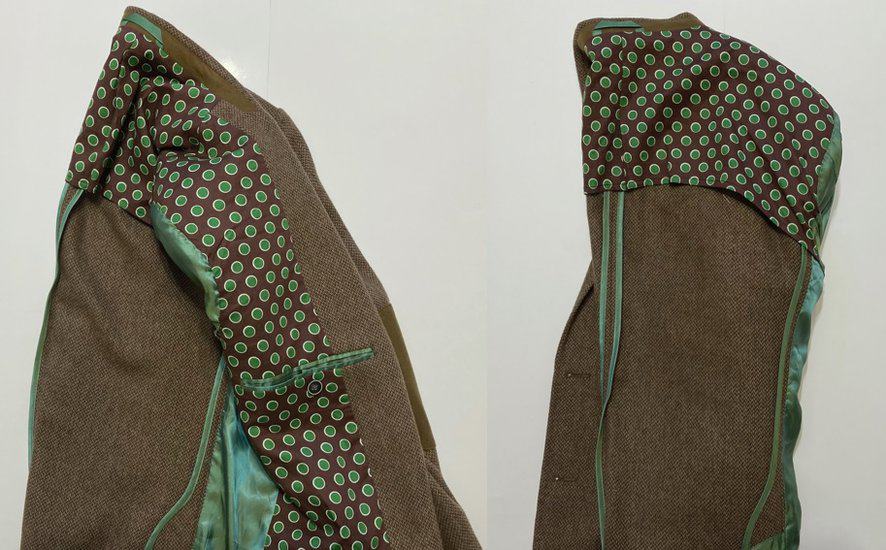
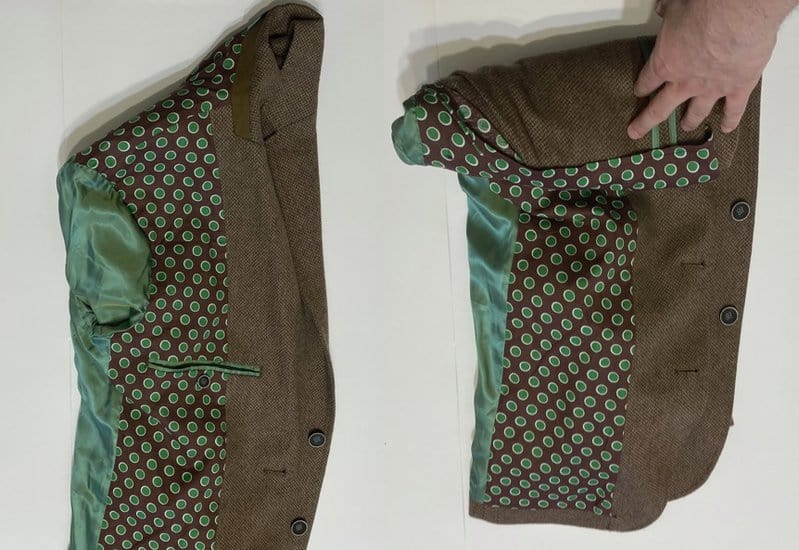
You will then begin to carefully and gently roll your blazer, starting from the top and working your way down. It is important that you do not roll too tightly, as this can lead to unnecessary creasing. It is also important to note that storing too many items of clothing in the blazer can cause the roll to come undone. As a general rule, do not store more than three articles at a time.
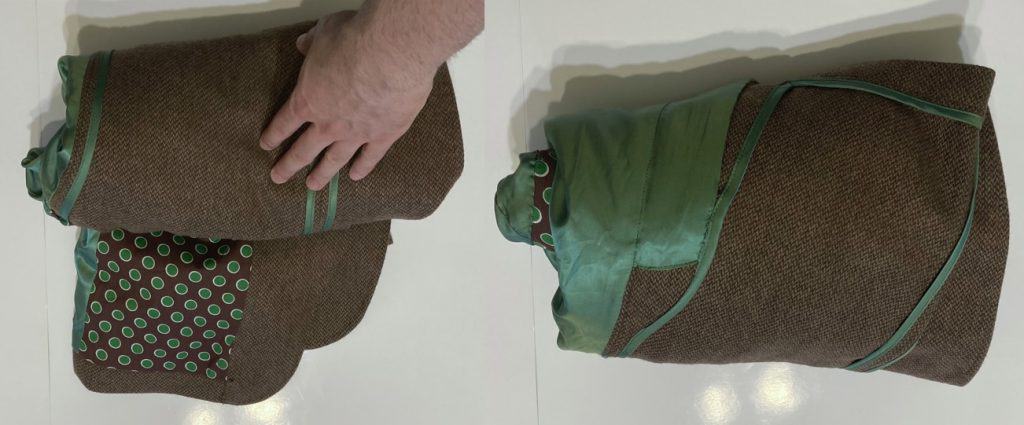
The biggest disadvantage associated with the jacket roll is the fact that the blazer will take up more space when stored in a suitcase. It is much easier to pack a bag when your clothing is folded so it is nice and flat – more so, it allows you to fit in way more clothing. On the other hand, a rolled blazer is much bulkier, meaning that you will not be able to cram as many articles of clothing into your bag.
Final Thoughts
Folding a blazer inappropriately can cause it to become wrinkled, and in some cases, you can permanently crease it with incorrect folding. In order to avoid this, we have listed and described three popular folding techniques that are often used by men around the world.
These techniques include the tucked-shoulder fold, the shirt-style fold, and the jacket roll. The tucked-shoulder is arguably the most common folding technique when it comes to the blazer. On the other hand, the shirt-style fold is the easiest, while the jacket roll will almost completely eliminate the risk of permanent creasing.

Samoel Ovanessian is the founder and creator of StylishAlpha.com – a website dedicated to men’s fashion. As a proud owner of more than 200 ties, he loves digging through new clothing combinations for everyday use, formal events and even just for fun. You can read more about Samoel here.

